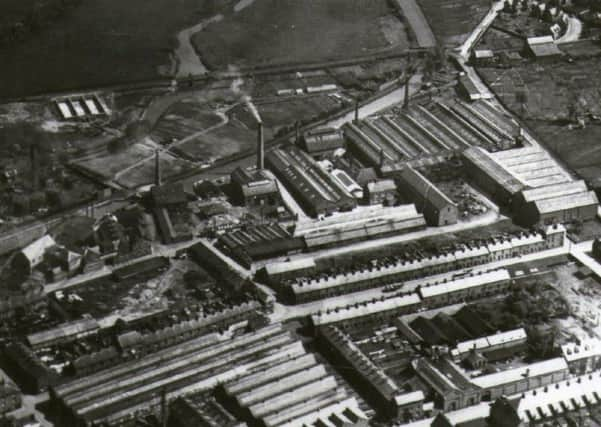Look Back with Little: Britannia '“ more than just a place of industry


One of these was Bernhard Samuelson: he displayed a considerable number of agricultural implements. These featured ploughs, horse hoes, churns, and turnip cutters including his new patent.
A comprehensive account of what was known as the Britannia Works was put together by G C J Hartland who developed a great interest in the town’s nineteenth century industry. The article contained valuable memories supplied by A W Jones and B Boscott, former employees of the company. Unsurprisingly such a variety of products could not take shape under a single roof. There was an Upper and a Lower Works. The former occupied land bounded by Fish [George] Street, Britannia Road, Windsor Terrace and Lower Windsor Street. Apart from offices there were four fitter shops for turnip cutters, flour dressers and lawn mowers. The visitor to the Upper Works would also have discovered lawn mower grinding machines, and those for flour milling. Long machine shop bays were prominent as were specialist pattern and electro plating shops. Collectively the operational parts produced a deafening din that could be heard streets away.
Advertisement
Hide AdAdvertisement
Hide AdThe Lower Works occupied the space delimited by Canal Street and Swan Close Road and stretched from canalside to Upper Windsor Street. This location meant that pig iron, furnace coke and mouldings could be off-loaded from narrow boats. The working day at the furnace was long: 6am to 8pm on weekdays. Here ‘blood-red flames roared skyward’.
Noise was also a feature of the work done by fettlers. They ground rough castings on wheels until highly polished. It was a different story along Swan Close Road. Here were the carpenters’ shops , pattern makers’ shops, and paint shops. Men wore white aprons and pill-box hats.
The Upper and Lower Works needed to be connected and this was achieved by a 2 ft gauge tramway that went over the canal and river bridges before reaching railway sidings. Sadly no trace of the tramway can be found despite vigorous checks in Swan Foundry. Trucks were hauled by a steam wagon and when conditions rendered this useless shire horses were called upon.
Samuelson took a very paternalistic view of life at the Britannia Works. He especially encouraged football and cricket at competitive level. The field which is now home to Banbury United was originally provided by him as a sports field for his workers. It had a fine pavilion with a thatched roof and included a dining room as well as dressing rooms. Behind this pavilion was a rifle range, skittle alley, and clay beds for quoits.
Advertisement
Hide AdAdvertisement
Hide AdThe locality was not well supplied with schools so Samuelson built Britannia British School (later known as Cherwell British School) and paid for it out of his money. A site was found on the west side of Britannia Road opposite Windsor Terrace. Close to the school gates were buildings which contained a library, a games room and a hot slipper bath.
In September 1954, the Banbury Advertiser carried an article with the inviting title ‘One Man’s Memories of a Bygone Era’. The man in question was Joe Herbert. Amongst Joe’s most interesting recollections were the descriptions of some of the leading personalities.
Chief amongst these was Managing Director Ernest Samuelson, who began each day walking all the way from his home Bodicote Grange. Next Joe recalled a fettler by the name of Dick Stanley. The start of his day illustrate the merits of a routine; up at 5.15am and a round-up of some of his work mates.
The character and development of Samuelson’s Britannia Works suggest a need to be recalled in the light of the proposed regeneration of Canalside in Banbury. Swan Close Road buildings include small but historically significant survivals from the 19th century heyday of the business.
The vision should incorporate these so that a future urban quarter will offer both to residents and visitors a peep at the past.